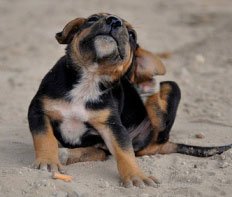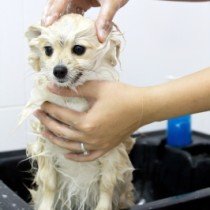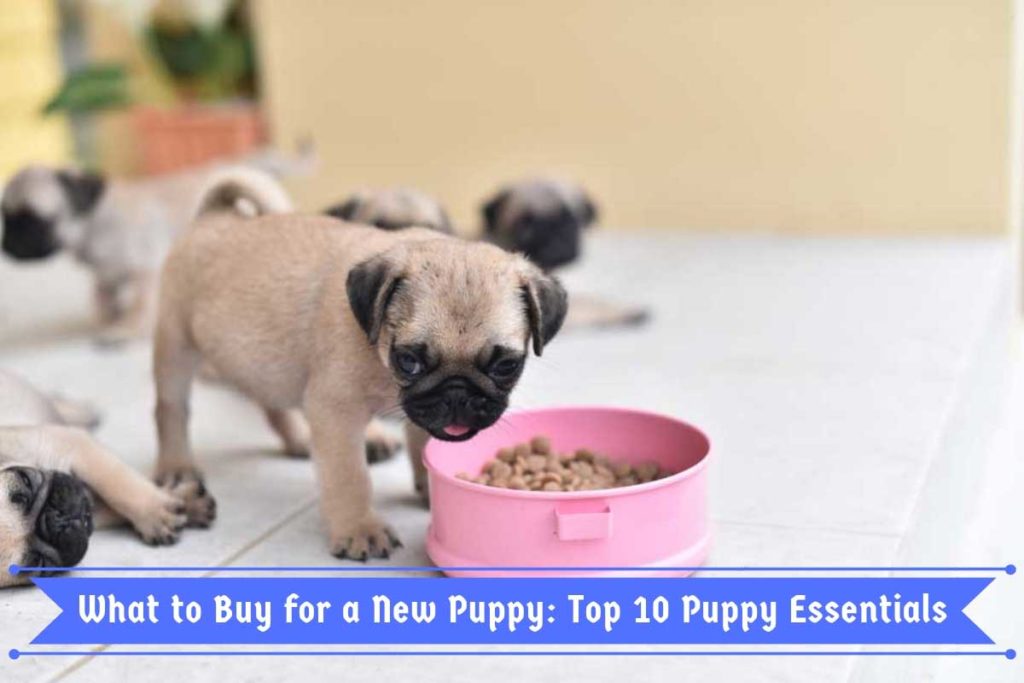
There’s a lot to learn before you bring a puppy home and there’s also a number of essential puppy items you’ll need on hand to ensure your pup is happy and healthy in his new home. The first few weeks and months a puppy is in your home are important when it comes to establishing ground rules and ensuring he is protected and well-behaved. However, with so much out there, such as the dog crate, the puppy collar, the dog bed, products for puppy proofing your home, and a million-and-one other puppy supplies, you may not know where to turn.
Therefore, if you’re thinking about buying a puppy, adopting a puppy, or a puppy has made his way into your life in a less intentional way, here are a few things you need to make the most of life with your new friend.
Contents
10 Puppy Essentials and Why they are Important
Harness, Leash, and Collar
You’ll need to take your puppy outside several times a day and it’s important to have a way to secure the puppy for walks. Even a puppy who has free roam of an enclosed yard should have a collar on just in case he manages to escape. The tags on the collar can include your contact information other important details about the puppy’s well-being and how to return him.
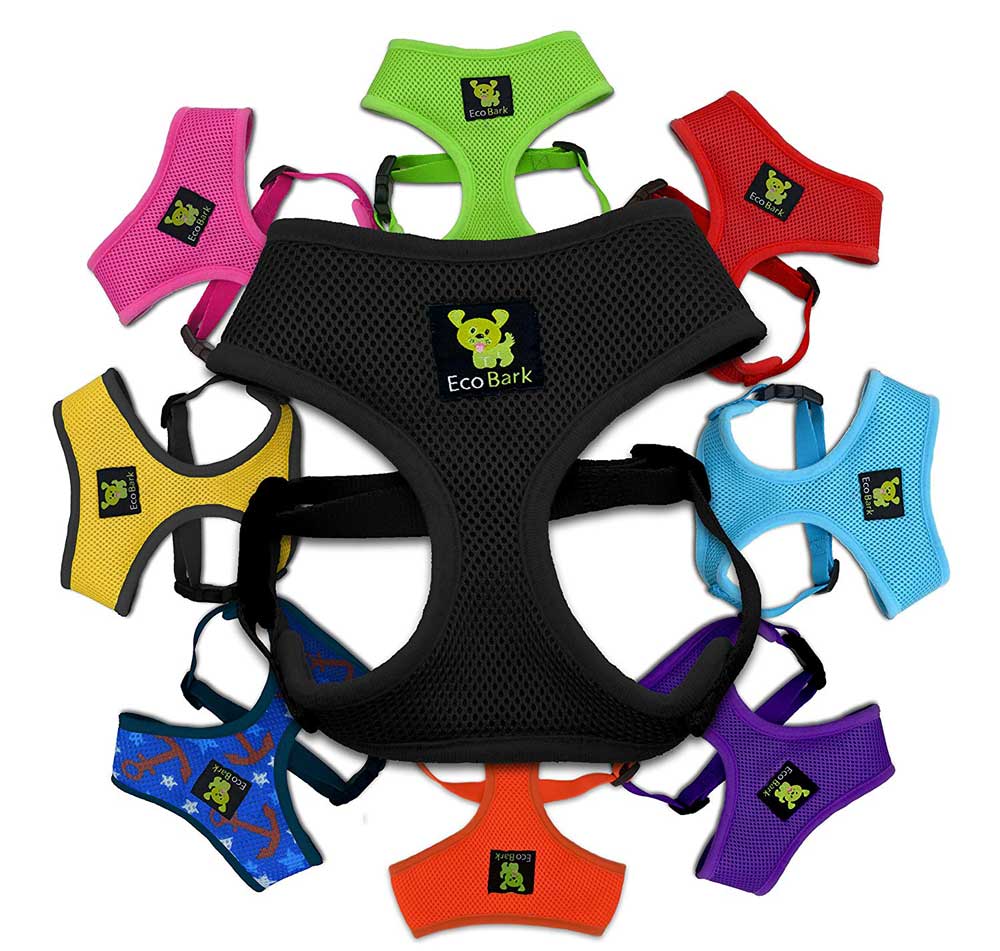
Leashes and puppy harnesses are also important when you’re walking your pup. Some people attach a leash to a dog’s collar, but this usually isn’t the best option for a puppy. It’s especially not safe for smaller breeds of dogs. Puppies are learning to walk on their leash and they’ll tend to pull in the early days of their training. A harness can not only protect their necks when they pull, but it can also help them learn not to pull on the leash.
Harnesses should be tight enough to now allow your pup to slip out even when he’s pulling, but not so tight that it’s constricting or pinches him. You can usually judge the fit of a harness (and a leash) by fitting two fingers between the pup’s body and the harness. As long as two fingers are snug but fit without forcing them between the two surfaces, you should be good to go.
It’s also a good idea to invest in two leashes. One shorter one will be used for walking and the longer one will be used for training. When you are teaching your pup to “come,” you’ll need the longer leash to prevent them from wandering off but to allow for enough roaming space that they won’t feel tethered to you.
Puppy Crate
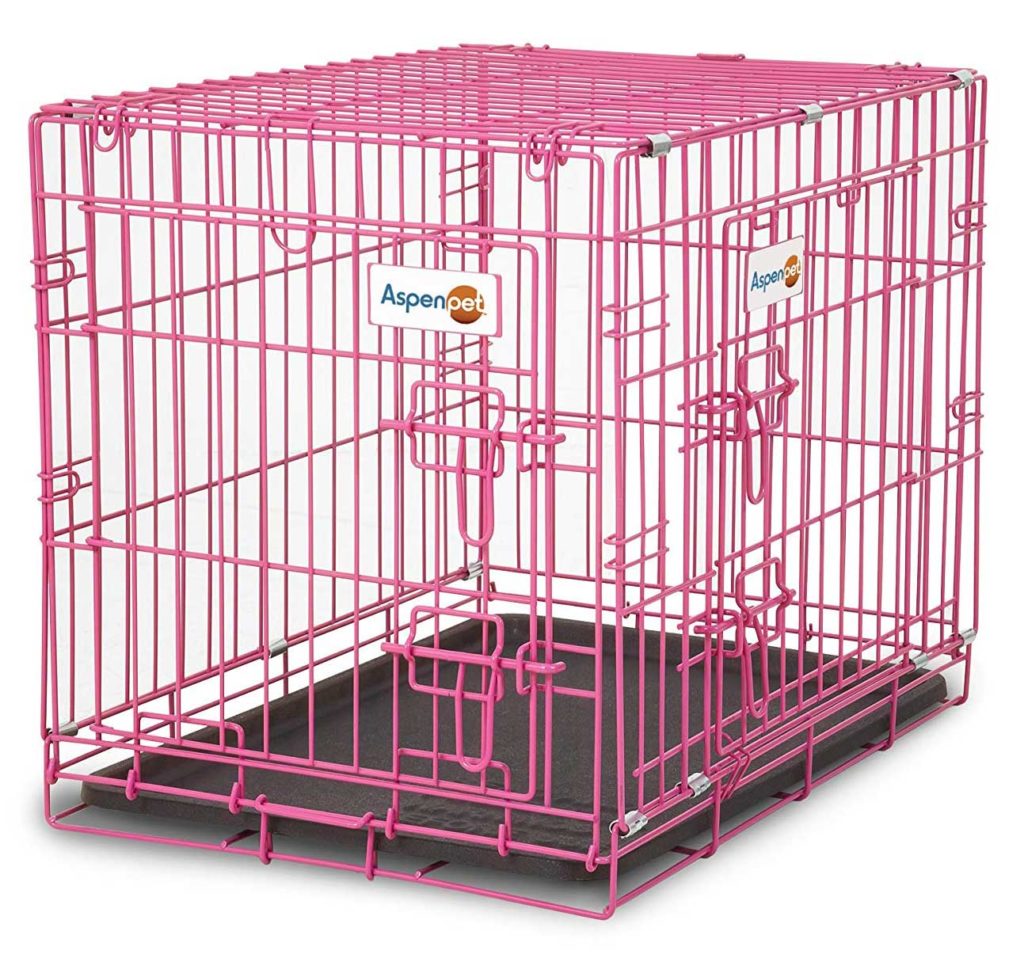
Crate training a puppy can help make life easier for you and provide the safe space your pup needs to feel comfortable and confident. Even if you don’t intend to crate your dog when you aren’t home, puppy crate training is a good idea. This ensures you are able to monitor your pet’s bathroom habits during potty training and teach your pup he’s to go outdoors to use the bathroom.
Crates also provide a dog with a room of his own. When used properly, pups love being in their crates because they know it’s their safe space. Make sure children know that when a puppy is in his crate, they shouldn’t be instigating play or teasing the pup.
A puppy crate needs to be large enough for the pup to stand up, turn around, lie down, and stretch, but not so large that he is able to run around and play inside. It’s also a good idea to place in the crate a blanket or two to keep the puppy safe and warm. Some dogs even drag their favorite blankets in and out of the crate with them!
Crates can be used for timeouts and for potty training, but shouldn’t be seen by the dog as a punishment. Simply treat the crate as you would a child’s bedroom. If things get a little wild or the pup makes a behavior mistake, tell them “no,” and then in a cheerful voice tell them it’s time to go into their crate. A pup will learn quickly that his crate is the place to mellow out and get control over her behavior.
Initially, you’ll want to use treats and positive reinforcement to get the puppy into his crate. Most pups are eager to explore the crate and are willing to enter the crate if the door is left open. Eventually, you can graduate to closing the door and maybe even covering the crate to give them a dark environment in which to nap during the day.
Puppy Gates and Ex-Pens
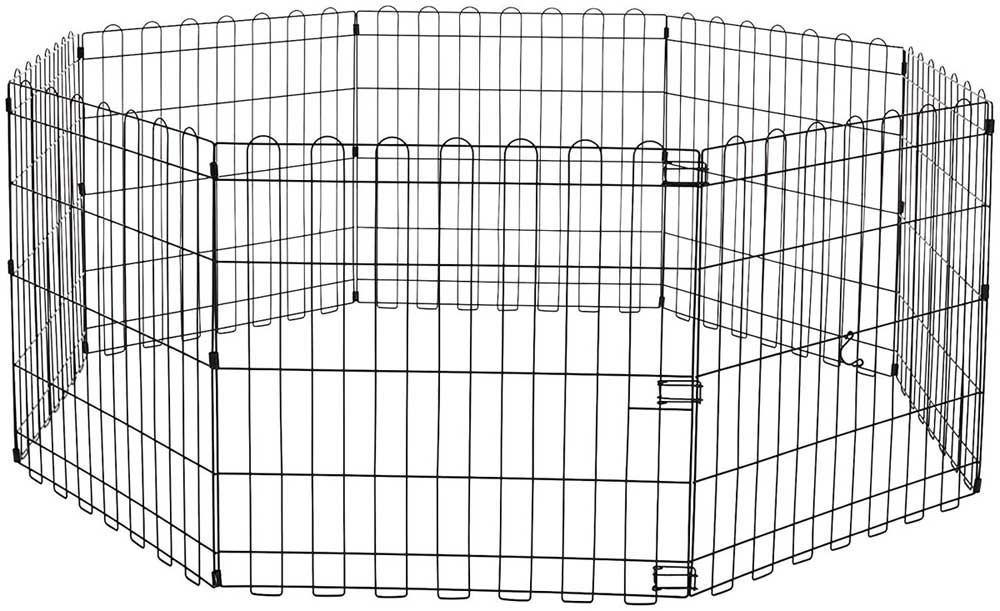
Another essential puppy item is a puppy gate. You can also use an exercise pen if it’s large enough. The thing you’re looking to accomplish with either of these items is to restrict your pup’s access to just a certain area of your home. You should include puppy pads, a water bowl, favorite toys, and anything else your pup needs on an ongoing basis in the pen or in the room that’s blocked off by the puppy gate.
You need to teach your pup limits early in life and keeping them contained in a smaller space instead of giving them the run of your home can really make things easier, especially during the training days.
Puppy Food
Your puppy needs to eat correctly from the very first minute he comes home and, ideally, he’ll get food that is designed specifically to meet the nutritional needs of a growing pup. For the first several weeks of your puppy’s life, he was suckling milk from his mother. This provided all of the nutrients he needed during these first several weeks. He eventually stopped nursing and graduated to soft food or kibble. This is what you’ll need to feed him for about the first year of his life before he transitions to adult food.
There are, of course, exceptions to this. For instance, puppies weaned onto raw food can eat the same food as they will, once they’re an adult—they’ll just eat a different amount of it. In most cases, however, people feed puppies food specially formulated for puppies.
Puppy food is smaller (if it’s kibble) and contains more calories than adult dog food. Your puppy is growing and very active, so getting enough calories is essential to his growth.
Look for food that is designed specifically for puppies and is from a reputable brand known for using high-quality ingredients. You can also supplement your pup’s diet with treats, which in the early months, should be limited to training purposes. You want to make sure your pup gets enough calories, but not so many that he grows too fast and becomes too plump.
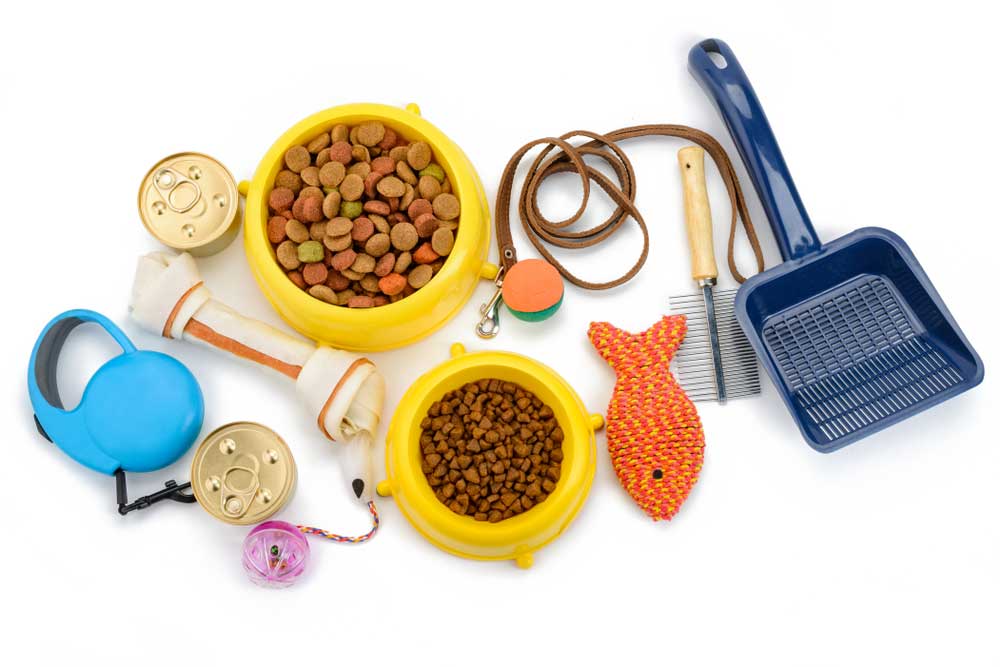
Read on for some additional considerations when choosing puppy food for your new friend.
Growing puppies need a great deal of protein. It serves as the building blocks for muscle tissue and is necessary for a pup’s development. A puppy’s highest protein needs are from birth to four months when he needs at least 22% protein in his diet. Adult dogs need a minimum of 18% protein. Puppy food is specially formulated with more protein than adult dog food.
Puppies also need plenty of fuel for energy, which comes in the form of calories from carbs and fat. Puppy food is usually higher in calorie density than adult dog food. Carbs are a direct supply of energy and prevent the pup’s body from burning protein as energy. Fats are concentrated energy and essential to a pup’s growth.
Puppies also need minerals like calcium. This helps them develop strong bones and teeth. However, as important as calcium is, it’s also important to make sure a pup doesn’t get too much calcium because it can lead to skeletal abnormalities. Puppy food is made with the right balance of calcium so your little guy gets what he needs from his meals.
Puppy Bowls
Obviously, you need something in which to put your pup’s food when feeding him. Puppy bowls are an essential item to buy when shopping for your new puppy. You’ll also need a vessel for water, which can be a bowl or a mounted drinking bottle.
Most puppy owners prefer heavy bowls because pups and dogs will push and pick up their bowls if they are too light. Some people recommend ceramic bowls, but it’s important you check the materials used to create the bowl. Some paints and other materials can be dangerous and should not be used for feeding dogs. Metal bowls are considered safer but might be too light and encourage your dog to pick up or move his bowl.
You might also consider a stand for the bowls. This serves a few purposes. A stand can prevent your dog from moving his bowl. It can also elevate food and water bowls, making it easier for your dog to eat. Some pet medical experts believe that not forcing a dog to bend his head and neck downward when eating can make digestion easier.
Puppy Bed
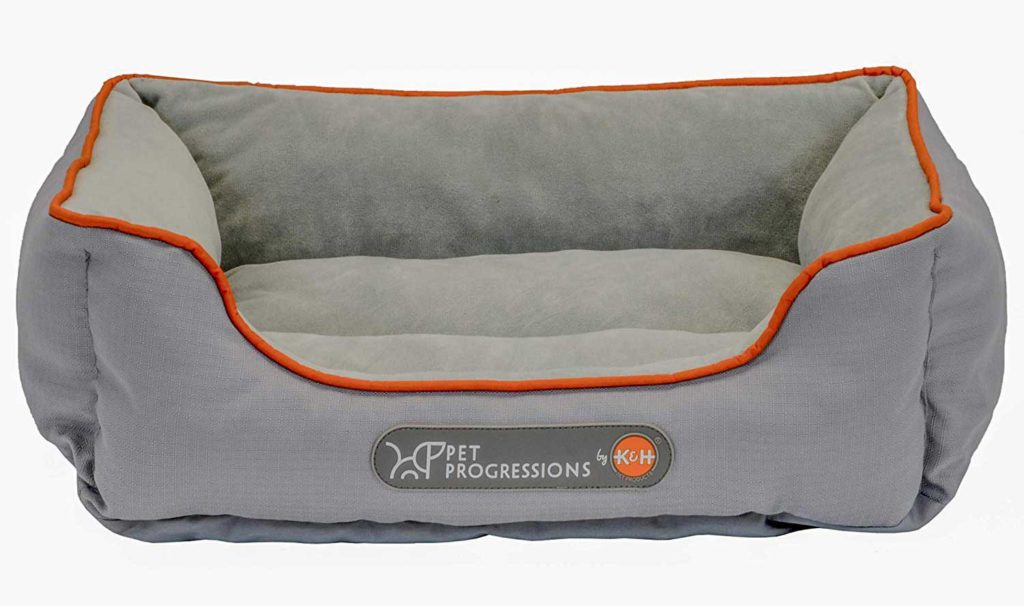
Even if you crate your dog or intend to allow your full-grown pup to sleep in bed with you, he’ll still need a bed in your home. This offers the puppy a comfortable place to nap and relax when not eating, playing, or engaging in other activities. Some people even putpuppy beds in a few rooms so their pups can be near them while they are doing other activities while the pup rests.
If you can find one, choose beds that are chew-proof because some puppies will chew on anything and will end up destroying their beds.
Puppy Chews and Toys
Chews and other toys are essential for your puppy. This is an important time in his life and not only is he learning to play, but he’s also learning what’s appropriate to chew on. Puppies are losing their baby teeth and growing their adult teeth and this can be uncomfortable, as it is for human babies. They will chew and they won’t realize they are doing anything wrong if they end up chewing on your shoes or other cherished belonging.
The way to prevent puppies from destroying everything you own with their teeth is to supply them with appropriate chew toys. These toys are designed to encourage chewing and to provide them relief from their growing teeth.
If there is anything you don’t want your puppy chewing on, remove it from their environment. Eventually, they’ll realize what’s OK to chew on and what’s off-limits—but as babies, they have no idea. Puppies love chewing on stuffed furniture, wood, leather, and, of course, shoes. This is also another reason why it’s a good idea to have gates, crates, and ex-pens. Wandering puppies will find something to chew on faster than you think and you’ll find your belongings destroyed in the blink of an eye.
In addition to chews, your puppy needs other toys so he can learn to play with humans, with other dogs, and with himself. Great puppy toys include those that are interactive, those you can add treats to and keep them occupied, and those that challenge the puppy mentally and/or physically. Playing with your pup is a great way to bond, so make sure you choose a few toys that can involve human and pup play, such as balls and pull toys. Be careful, especially with a puppy, not to over-pull on toys because it can cause serious health complications.
Grooming
Finally, you’ll need a few grooming products for your pup. Much of what you need will depend on the breed or breeds of the puppy. Longer haired breeds require more grooming than short hair breeds.
A few of the grooming products you should consider include brushes and combs, toothbrush, toothpaste, shampoo, conditioner, wipes, anti-itch spray, ear cleaner, and eye cleaner. Not all dogs will need all of these items. You can discuss with a vet or your groomer what items will most help you when taking care of your puppy’s grooming needs at home.
I grew up in a household that was filled with animals. I believe that my fate as a dog-loving person was sealed in early childhood since my parents owned several dogs of varying sizes and breeds. There was no choice but to take care of and learn about dog habits and the best animal care practices — otherwise, I’d be clueless about how to go about the creatures I was surrounded by day and night.
As a life-long puppy lover, I know a thing or two about dogs and how to go about caring for them in the best way possible. Although I’m not a professionally trained dog behaviorist, trainer, or veterinarian, all of my knowledge and experience with canines comes from a place of love and a deep-rooted passion for dogs and animals in general.
Seeing as dogs kept me company throughout every stage of my life, I decided to follow a different path in my academic life and obtained a Bachelor’s and Master’s degrees in Marketing Management and Digital Advertising, which ultimately allowed me to combine my professional training and personal experience by creating the ultimate dog lover’s resource website! Along with my husband, Dave, I run MySweetPuppy for like-minded dog lovers who want to have a single, clear, and reliable information source about anything and everything related to dogs and their well-being.
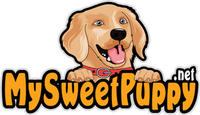
![[HOW TO] Get Rid Of Puppy Worms Today](https://mysweetpuppy.net/wp-content/uploads/2020/09/How-much-should-I-feed-my-8-week-old-lab-puppy.jpg)
